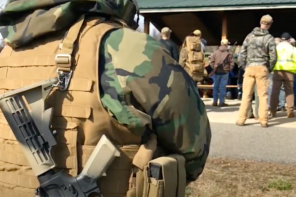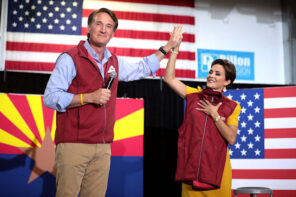In Newtown, families are grieving dead first-graders. On the day of the killings, while I counted the minutes until I picked up my own daughter from day care, I was haunted, for every one of those minutes, by a figure of contemporary cultural mythology, Katniss Everdeen.
Katniss, the bow-wielding Athena of The Hunger Games series, recognizes that it is actually senseless to bear children into a violent world. In the series’ dystopian world of Panem, the power of the state in destroying young people is explicit and active: children 12 and older are placed in a lottery each year—a reaping—and selected to compete to the death in a moment of national spectacle; tribunes in a futuristic, reality-show arena.
In the very first chapter of the very first book, Katniss and her friend Gale contemplate the dawning of another year’s reaping. “I never want to have kids,” Katniss says. “I might. If I didn’t live here,” says Gale. Katniss, irritated, replies, “But you do.”
Yes, we do. We do live here. We live in an America with a high rate of gun violence. We live in a world where children die every day, from guns, from domestic violence, from car accidents, from wars (including bombs we have dropped), from starvation, from disease.
But Newtown, like Columbine and so many other school shootings before it, moves and horrifies us nationally because of so many images, most of them religious. Students fleeing from their school building. The meeting of the quotidian classroom and weapons that belong on a battlefield. Two children before wintery woods in a New York Times photo, clutching each other like Hansel and Gretel in the forest. Grieving parents, who I pray, this time, will be spared the spotlight. Beautifully lit candlelight vigils. Stories of bravery among teachers and staff. Our tearful parent-in-chief.
Like the Roman arenas that inspired The Hunger Games, the coverage of these tragedies is all about spectacle, our voracious need, even in mourning, to witness the horror vicariously from the comfort of our own bread-filled homes.
We have always been morbidly captivated by dead and threatened children. Abraham is “father of faith” because of his willingness to bind and nearly sacrifice Isaac, to take part in what Kierkegaard calls “the teleological suspension of the ethical.” Suspension barely covers it. Jephthah, a military chieftan in the book of Judges, keeps a vow with God and sacrifices his daughter. No angel stays his hand.
We remember child martyrs in the crusades, young Holocaust victims like Anne Frank, the deaths of Emmett Till and four little girls in Birmingham, Alabama. The children of the day care center in Oklahoma City. Our enduring image from that dark day is a fireman, soaked in blood, carrying a baby on the cover of the magazines. Youth move us because they bring to the light the existential horror of no future.
Katniss is right. It makes no rational sense to bring a child into a world like this one. Her words will be prophetic, as her state destroys children under more than one regime. Ours does not kill them quite so explicitly. But our passive failure to act against violence is an unholy unsacrifice all the same. There is no divine gift exchange here, no ritual logic, and no meaning.
“Who would do this to our poor little babies?” asked a teacher at Sandy Hook. What would Katniss do? In the end, she does have children, saturated with terror the whole way. Before that, though, she ends the game. She fires her arrows at the perpetrators of the endless cycle of violence. Many, many years later, she has children.
They play upon the meadow that covers a mass grave.




